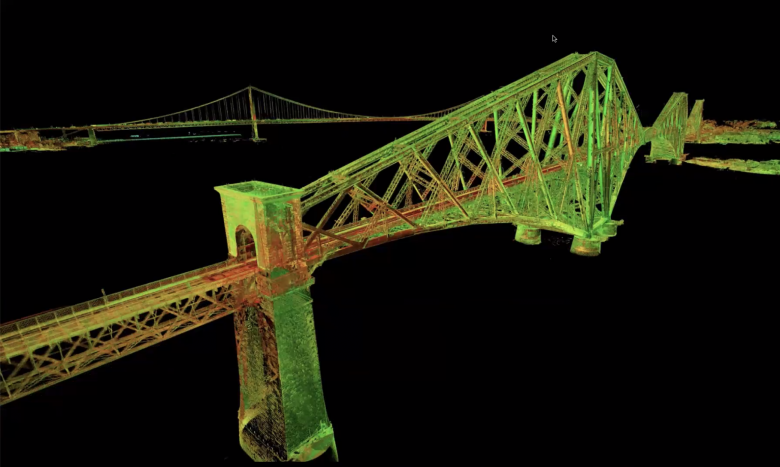EuroMed 2020: Cultural Heritage in transition

Forth Rail Bridge: iconic World Heritage Site visited by tourists as a symbol of Scotland. This image is from its ‘Digital Twin’, created to greatly enhance understanding and maintenance. From the EuroMed 2020 presentation by Al Rawlinson, Head of Digital Innovation and Learning, Conservation, © Historic Environment Scotland.
2-5 November was an extraordinary week: 1063 people from 77 countries around the world joined a series of four full-day online workshops with presentations by 184 experts. EuroMed is a biennial feast of knowledge and innovative ideas about cultural heritage hosted by the Technical University of Cyprus, and normally held in Cyprus. But of course, 2020 has not been ‘normal’.
EuroMed this year was especially diverse, reflecting on ‘work in progress’ on priorities of the moment as we all adjust to the impact of COVID-19.
Piet Jaspert, Vice-President of Europa Nostra, presented Cultural Heritage…a path to the future – a message that sustainable cultural heritage helps to ensure a resilient Europe: “I was so impressed by the volume and broad range of EuroMed 2020, including Discovery Europe. We need to democratise access to our cultural heritage, including by digitally transforming Europe.”
“Digital” has been a lifeline during the pandemic, enabling many cultural heritage places and activities to move online when physical venues and events were closed. Nevertheless, digital remains unknown territory for many, for it encompasses such a diverse range of media and applications undergoing constant development.
Such is the speed and scope of transition for digital that the European Commission has commissioned a special study into one of its most relevant aspects for cultural heritage. It will map and make recommendations for a Europe-wide understanding of 3D digitisation of tangible cultural heritage – places, buildings, objects. It is being led by Marinos Ioannides of the Digital Heritage Research Lab of Cyprus University of Technology.
Graham Bell (Board Member of Europa Nostra) is a specialist advisor: “Notre Dame is the most well-known catastrophy in which the value of having a 3D digital record – a “Digital Twin” – can inform options for authentic reconstruction. Around Europe many initiatives are producing 3D records of tangible heritage, from highly sophisticated modelling of World Heritage Sites to community photogrammetry of a church. It is unclear how compatible the techniques are that everyone is working to, and therefore the project’s purpose is to advise the European Commission in finding common ground through consistent standards.”
If 3D is your field of expertise, you too can contribute to this first EU study and help others who will follow. Please complete the following questionnaire as soon as possible, but not later than 15 December 2020: https://lnkd.in/d7KgXE8






